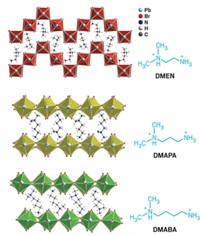Advertisement
Grab your lab coat. Let's get started
Welcome!
Welcome!
Create an account below to get 6 C&EN articles per month, receive newsletters and more - all free.
It seems this is your first time logging in online. Please enter the following information to continue.
As an ACS member you automatically get access to this site. All we need is few more details to create your reading experience.
Not you? Sign in with a different account.
Not you? Sign in with a different account.
ERROR 1
ERROR 1
ERROR 2
ERROR 2
ERROR 2
ERROR 2
ERROR 2
Password and Confirm password must match.
If you have an ACS member number, please enter it here so we can link this account to your membership. (optional)
ERROR 2
ACS values your privacy. By submitting your information, you are gaining access to C&EN and subscribing to our weekly newsletter. We use the information you provide to make your reading experience better, and we will never sell your data to third party members.
Materials
Making invisible inks more invisible
Simple process converts MOF in invisible ink to luminescent nanocrystals, providing reversible invisibility
by Mitch Jacoby
November 6, 2017
| A version of this story appeared in
Volume 95, Issue 44

Invisible inks based on “smart” fluorescent materials have been shining brightly (if only you could see them) in the data-encryption/decryption arena lately. Researchers have debuted various organic dyes, nanocrystals, and other materials to help keep confidential information secure and to develop anticounterfeiting strategies. But some of the materials are costly or difficult to prepare, and many of these inks remain somewhat visible when illuminated with ambient or ultraviolet light. Liang Li and coworkers at Shanghai Jiao Tong University may have come up with a way to get around those problems. The team prepared a colorless solution of an inexpensive lead-based metal-organic framework (MOF) compound and used it in an ink-jet printer to create completely invisible patterns on paper. Then they exposed the paper to a methylammonium bromide decryption solution, thereby converting the starting material to luminescent, MOF-encased methylammonium lead tribromide nanocrystals, which shine brightly under UV light, revealing the pattern (Nat. Commun. 2017, DOI: 10.1038/s41467-017-01248-2). They rendered the pattern invisible again by briefly treating the paper with a polar solvent, which destroys the structure of the MOF-encased crystals and quenches their luminescence. Now, the team is working to develop tin-based or other lead-free starting materials and procedures for using the ink repeatedly.



Join the conversation
Contact the reporter
Submit a Letter to the Editor for publication
Engage with us on Twitter